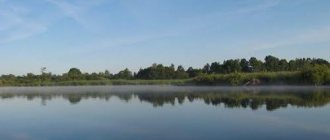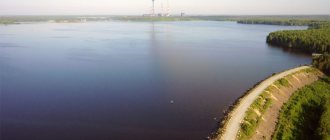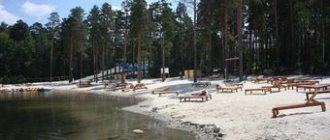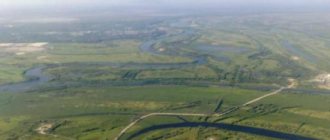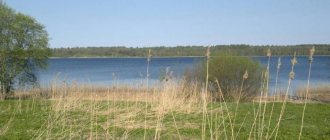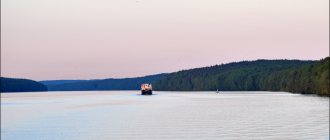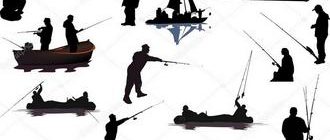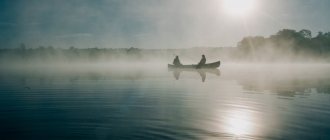The Klyazma is my favorite river for fishing.
Year after year, visiting different parts of the Orekhovo-Zuevsky district, I am convinced that the number of fish has not decreased over the past five years, as is often claimed. It’s just that every year the catches are harder, but this is where the great interest lies - the more difficult the fishing on Klyazma, the more interesting it is. Although often successful solutions to fishing problems are outrageously simple!
Yes, it is noticeable that the indicator “kilograms of fish per person” along the river has decreased. And not surprisingly, more and more people are coming. I have never seen so many fishermen and vacationers on Klyazma like last year! And the “flashing”, “feeding” and “floating” of the river is proceeding at an active pace - similar baits, lures, wiring, tactical fishing schemes that worked until recently, but now stop working, are being widely used. Especially in popular places. So what should I do?
I’ll reveal the “deepest secret” that Klyazma had - he’s not like everyone else!
Lopasnya River
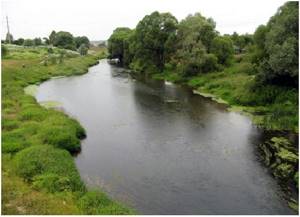
Left tributary of the Oka. In the upper reaches of Lopasnya, near the villages of Bogoyavlenie and Efimovka, there is a cascade of ponds with medium-sized pike, perch, crucian carp and roach. There are quite a few fish below. Roach, chub, and small pike are found here. Downstream, the dam near the village of Khatun is of interest. Above the dam they catch roach, pike, and bream, and on the drain - chub and roach. An interesting place for fishing on Lopasnya is also from the village of Turovo to the confluence of Lopasnya and the Oka, where they catch good roach in the spring and pike in the fall.
Examples at every step
In late autumn, the grass falls, and trollers begin to rush back and forth along the river. First, someone will snatch something, then the catches drop sharply. And you can understand the pike, it also has reflexes, like Pavlov’s dog - every day these wobblers flash under its nose dozens of times. The fact that they are different in color, size, game, speed of movement does not make horseradish radishes sweeter, because they only walk along the river - up or downstream. But it’s enough to cast the wobbler across the riverbed, and a bite immediately follows, often one after the other. By the way, a quick question for trollers: have you noticed a pattern of bites when moving diagonally from one bank to another along a fairway that changes direction? Do fish like to stand at these crossings? Or is it a matter of wiring direction...
An example of a different kind: the shore is strewn with spinning rods, plus they throw from boats in all directions. There is a bite, but uneven, gradually declining. Many people are starting to reduce the size of their baits: 10 cm, 7 cm, 5 cm, 3 cm... This technique works, but not for long. Time to go home? In no case! On the contrary, I take a large bait of 12-14 cm, no matter what, as long as it is large, not like everyone else, and in the afternoon I catch a good pike - this has happened more than once or twice. A similar moment is clearly visible when local experienced fishermen appear on the river, sailing on old boats and dragging large “crocodiles” with homemade wobblers. I saw their baits - five-piece wobblers up to 30 cm long! With ordinary small spinning baits, everyone pulls small things or nothing at all, but with homemade wobblers - giants - pikes of 2-5 kg jump out from somewhere. However, the decrease in the effectiveness of these decoys is already clearly noticeable in those areas where they are used most often and en masse. That is, the rule from the section “do not do like everyone else” always and everywhere works. This axiom even works on the color of baits. Yes, by and large, in some average conditions color does not have any role, which is what many people use on the Klyazma - they put something universal, with a color similar to the silver scales of whitefish or perch, and something, although sluggish, but gets caught. In the same conditions, someone hooks a bait of a poisonous color, some kind of disgusting pink, the hand of a normal, adequate spinning angler will not rise to attach such a thing to the clasp, but such a deception can work so that the silver will rest on the side...
Fishing on Protva
Protva is a river that flows through the Moscow and Kaluga regions.
It is a left tributary of the Oka River. Its length is about 280 kilometers, it is fed by meltwater, and is characterized by spring floods. The annual freezing of the Protva is explained by the small width of the river, not exceeding one hundred meters. This river originates in a small swamp in the vicinity of the village of Zamoshchitsa, which is located near Mozhaisk. At first, the river looks like an inconspicuous stream flowing through the thickets of the forest, and then it comes out to the village of Mokroe. There are many good fishing spots on Protva. Here you can find chubs, minnows, breams, perches, ides, crucian carp, and pike. In the section of the river near Revyakin, in addition to the fish already listed, you can also catch roach, asp, rudd, and bleak.
The best places for pike are considered to be areas near the village of Kolyusheva, Kaluga region. You can find pike here both large (up to 3 kg) and not very large (1 kg). They are excellent to catch at any time of the year. Fishing on this river is possible in several ways: an ordinary fishing rod, fly fishing, girders, and an ultra-lightweight spinning rod. The baits on this river are white: oscillating and rubber.
For fly fishing, the best bait is a dry fly, which imitates the action of any insect. It is good to try baits that imitate caddisfly larvae. Anyone who chooses this method of fishing is forced to constantly move. Therefore, it will not be superfluous to choose the appropriate high-quality equipment. Spinning casters should also carefully prepare for fishing on Protva, just like fly fishers, but waders can be chosen cheaper, since casting can also be done from the shore. Suitable baits include a wobbler that targets predators and small spinners that rotate and are considered universal. Rubber baits are not suitable, as water thickets at shallow depths will prevent successful fishing.
Some fishermen consider the Protva a difficult river, since the fish bite is rare. But their opponents argue that you simply chose the wrong bait. Often maggots, peas or worms are chosen as bait. If all this “splendor” is replaced with simple pearl barley and bloodworms are added to it, then the bite will be more successful.
My friend used millet porridge with peas on Protva, and added chopped worms for flavor. At the end of autumn, pearl barley is completely eliminated, leaving only bloodworms without any additives. White fish and bream are well caught on the bottom, and the bait is a bunch of maggots, mounted on a hook with number 16, or 14. The bite continues until winter.
Another reason why fish bite poorly is impatience. Many simply cannot wait for the bite, because they simply don’t have the nerves to sit and stare blankly at the tackle, but there is still no bite. And then the tossing begins: to go home, or change this “uncool” place to another. Don't fuss, wait, and luck will smile on you in the end. It happens that Protva tests a fisherman’s fortitude, and the whole day does not give a single bite. And late in the evening, before 11 o’clock, the bite begins so madly that you have to use a flashlight so as not to miss the trophy.
This is due to the fact that during the day you fed and baited the fish at your fishing spot, and in the evening this technique gave its results. On the river, fish bite not only at night, but also in the summer heat and at other times. It all depends on the location, weather conditions and what time of year the fishing takes place. We must remember one more circumstance: it doesn’t bite at night, which means activity will begin in the morning or afternoon. And vice versa: there is no hunger during the day, wait for it in the evening or at night. A good place for catching bream is the area near the village of Nizhnyaya Vyazovnya. This is the Zhukovsky district in Kaluga. Quite large bream can be caught in this place using feeder gear. But you need to calculate it so that the feeders are as close as possible to the hole with the snag.
Fishing on the Protva is different in that the fish that live in this river react poorly to hard tackle. At the end of autumn, bream loses its activity, but chub can be caught very well on a feeder with small young frogs. The chub begins to peck on warm autumn days, but the fish don’t like frogs at this time, and with the onset of frost, just go ahead. Feeder tackle is used, but the feeder is replaced with a sinker.
If a chub is hunting for a frog, bait is not needed in principle, since if the bite has begun, then the fish will bite constantly. Sometimes you come across places where several schools of chub come to feed. True, this happens infrequently, and if you “run into” such a place, fortune will not let you down. When there is no chub activity for an hour, it is worth changing the place of “dislocation”. The fish bite on frogs very well, you don’t even need to hook them. Both kilogram and 500-gram specimens are caught. But such a trophy also pleases the fisherman’s heart.
Burbot in Protva are not very good: the maximum weight barely reaches half a kilogram. It is unlikely that it will be possible to release the “baby”: he swallows the hook very deeply, and the wounded fish will die anyway.
Fishing on the Protva River is quite unique and has its own nuances, which we have already listed. And if you're not very lucky, be philosophical about it. Nature, communication with friends, relaxation will echo pleasant memories in your heart.
I use the boat only when I want privacy
On the shore, where there are good access points, it is usually quite crowded; such places are often fed by beavers and floaters. In order not to disturb people, and so that no one bothers me, I pump up the boat. Usually it is enough to float down a little, climb up, or simply cross to the opposite shore in order to fish an interesting area of 150-200 m alone. Often, such a shore is enough even for a spinning angler for the whole day. In my humble opinion, this river is not for running, but for thorough fishing.
A boat is often necessary for small bays and floodplain lakes, but I practically never fish there, due to a number of reasons. The fish there are more capricious - there is enough food supply for both white fish and predators. In addition, poachers sometimes set nets in such areas. And the most important thing is that I am, essentially, a river fisherman, and fishing in still water is the same as lake fishing. Although there is a feeling that there is plenty of fish in the floodplain lakes, and the fact that these reservoirs are very overgrown is what the fish like, although they make life very difficult for the fisherman.
Along Klyazma itself, many coastal areas are also quite overgrown with algae, there are a lot of fish in them and nearby, but there is one trick here. If you catch pike in the grass and in adjacent calm waters, then, for the most part, small “laces” will land, at best individuals 700-900 g. Large pike rarely comes here, generally it prefers to stay a little further on the so-called second edge, which is often the upper part of the fairway slope, and, accordingly, the current here is already stronger. It is promising to fish the second edge with any bait that can “break through” the bottom - a jig, a deep wobbler, a spinner with front loading. How many times has it happened, as soon as the bait strikes along this steep edge, a bite from a respectable pike immediately follows, and there were fives. Experienced local pikemen are well aware of this, placing their mugs precisely along the second edge, and not along the tempting beautiful calm waters adjacent to the grass.
The most promising places
Fishing on the Oka in the Serpukhov region can only be effective if you have a good knowledge of the most catchable places. Some areas are better suited for fishing for predators, while others can bring a good catch of whitefish.
Protva
A very promising area is located in the area where the Protva River flows into the Oka. You can catch it here:
This area is very popular with floaters, as there are many places where effective fishing from the shore is possible. The key to successful fishing is properly prepared bait, to which you must add heavy soil that prevents the mixture from quickly washing away. In spring, baits of animal origin will work better. In summer, underwater inhabitants prefer boiled pearl barley and corn.
Many fishermen come here for the predator, which can be caught well with spinning tackle from May to September. It is easier to catch pike perch, pike perch and pike perch using classic jig baits, performing step-by-step retrieval near the bottom. Asp, chub and ide respond well to wobblers, spinners and oscillating spoons.
Villages of Lanshino and Drakino
Excellent fishing spots are located on the opposite bank of the Oka near the village of Lanshino. A special feature of this area is the presence of significant depths, which invariably attracts bream and pike-perch anglers here. On the extensive sand spits located near the village of Drakino, you can count on a good bite of asp and chub.
A little further downstream, the small river Skniga flows into the Oka, on the banks of which you can always meet anglers who enjoy reeling. Their trophies are roaches weighing from 100 to 400 g. Occasionally, it is possible to catch bream and ide using this method.
Lukyanovo
Near the village of Lukyanovo there are several deep holes where bream are successfully caught throughout the year. Some of the caught specimens reach a weight of more than 3 kg. Local fishermen prefer to use classic bottom gear with heavy weights and several hooks. The most significant catches are observed among feeders, who, unlike beavers, have the opportunity to attract underwater inhabitants with aromatic bait.
A little further downstream, next to the bridge, there is a large bay where in open water you can catch:
Not far from Lukyanovo there is a water canal connecting the Oka River with the Tsimlyansky quarry. There is always active migration of fish in its waters. Spinning anglers catch large pike perch here.
Getting to this section of the river is quite easy. From the Kursk station you can get to the “one hundred and seventh kilometer” platform and walk to the village of Lukyanovo. You can get here by car along the Simferopol Highway. The quality of the roads leaves much to be desired, so in rainy weather access to the shore may be difficult.
Lopasnya and Besputa
Of great interest to all groups of fishermen is the Oka section, near the confluence of the Lopasnya River. The varied bottom topography makes these places attractive for predators to inhabit. Large perch and trophy pike perch bite well here on a variety of jig baits. Near the mouth of the Besputa River there is a shallow riffle where asp, ide and chub can be caught well throughout the summer.
Mutenka
A rather interesting place for a fisherman is located above the road bridge, near the village of Lida. In the warm season, you can successfully fish here using a feeder and float tackle.
The main feature of this area is that in the autumn you can count on a good burbot bite. With the arrival of September, the predator is consistently caught with bottom gear, the hooks of which are baited:
- a bunch of worms;
- fish slices;
- chicken liver.
The daily bite of this fish is inconsistent. Night fishing turns out to be more effective. A little further upstream at the confluence of the Mutenka River, where burbot bite not only in open water, but also from the ice. More detailed information about fishing on the Oka in winter can be found in this article.
The maximum weight of local predators is about 2.5 kg. You can get to this site along the Kashirskoye Highway, turning off at the sign for the village of Lida.
Kremenyevsky roll
Not far from Kashira, near the village of Kremenye, there is a large riffle. During the entire period of open water, you can meet fans of fishing predators here. The following are successfully caught using a variety of artificial baits:
Night fishing on the riffles for pike perch can be especially interesting. As soon as the sun sets below the horizon, the fanged predator enters the vast shallow waters in the hope of feasting on small fish. The beginning of the hunt is easy to recognize by strong splashes.
If during the day it is easier to catch pike perch using jig types of bait, then at night it is preferable to use minnow class wobblers with natural colors and a depth of no more than a meter. Sometimes rotating spinners with a silver “long” blade show good results. There is no need to make long casts, since the predator often feeds just two to three meters from the water’s edge. For such fishing, the spinning angler will need to arm himself with a headlamp.
Below the rift near the village of Torbushevo there are two deep holes where not only pike perch and bream, but also catfish often linger. The mustachioed giant regularly bites on jig baits in these places.
The area between Ozery and Kolomna
Excellent fishing on the Oka near Serpukhov is possible in the area between Ozery and Kolomna. The extensive roll near the village of Gory attracts the attention of not only spinners. But also fly fishermen. Artificial flies are good for catching sabrefish and chub. If you put a small popper on the tackle, you have a chance to catch an asp. Very attractive places for anglers are located at the confluence of the Sturgeon River, where a wide variety of fish is found.
In general, on Klyazma it is very important to fish channel slopes
It is on them that large pike and perch come to fatten. Often these predators go along the slope to the feeding areas. And they settle in numerous shelters - deep coastal snags, near a bushy shore, where the roots are washed away by water. Often the movement of fish is minimal - across the river from the “wooden fortress” to the riverbed edge and back. And the fisherman needs to choose the right fishing tactics. All these coastal debris with backwaters, of course, look promising, and it is obvious that there must be a large predator here. He is, but often passive. You can only catch it by accident by putting the bait right under the fish’s nose, risking a dead hook. And the usual story: you suffer in such places, you try to stick the bait into the very snag, and nothing happens. You throw into the clear, towards the fairway edge, and immediately there is a bite of an excellent fish, and then another. Yes, this edge is often silent, but I always check it regularly, selecting baits that can confidently strike along the bottom here. The local predator loves this “teal” very much.
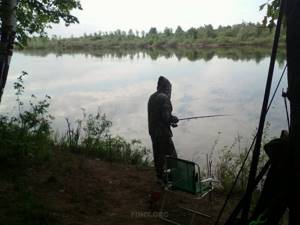
When catching large whitefish, it is even more important to separate the concepts of where the fish settles and where it feeds, because with donks you “stick” to the place. The same bream does not sit in the pits forever even in the pre-winter period. This is where it lives, and goes out to feed at the entrances, exits of pits, and even much further - into the expanse of feeding reaches, especially when the weather is fairly warm and calm. I remember about thirty years ago, when there were no feeders, I watched how experienced local fishermen dragged large bream in late autumn, setting two-meter poles without any reels. The fishing line is a couple of tens of meters, the equipment is a weight and a hook, on which there are a dozen maggots or steamed peas. They were exhibited precisely on reaches with depths of up to 2.5 m, about thirty meters above the pit. And when a flock of white bream entered the area, almost simultaneously the bells on dozens of poles began to ring with a pleasant ringing. This lasted no more than half an hour, then, as a rule, this fish returned again in the afternoon, making a large circle around its hole. Since then, the bream has not changed its habits, it has simply become more careful, and does not tolerate noise and trampling on the shore.
Fishing on Protva
In the summer, you especially want to get out of the city and into nature, to the river. At least for a day. Fishing, sunbathing, swimming. But not everyone is ready to come to the river bank and join the already too cheerful vacationers, of whom there are still many. And it seems that places where no one has set foot, where there are clean beaches and not a soul, simply do not exist. In fact, there are such places. And you need to know them. Then your vacation will not be “swimming and badminton with barbecue,” but a real adventure. Even on weekends. So we decided on such an adventure.
We took a small two-seater boat, provisions for two days, a tent and spinning rods for fishing. We carefully studied the map in the area of the city of Vereya and made sure that there were not so many settlements on a certain section of the river. And, except next to them, there are no approaches to the water. Our research was helped by maps from the Google Earth satellite, where almost every path is visible. The plan was this: we start from Moscow along the Kyiv highway at 5 o’clock in the morning, there are few cars, coffee in a thermos, invigorating music.
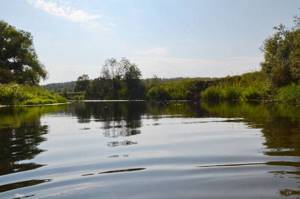
Fishing on Protva
There are several entrance options. For example, one of them: we arrive in the city of Vereya at about 8 o’clock in the morning directly to the central square, where there is a whole fleet of taxi drivers, we load things into a taxi, leave the car in the same square (large parking lot, safe) and for 400 rubles we drive upstream the river is about 20 km. You can start rafting earlier, you can go further, it all depends on the time and goals.
We reach the village of Andreevskoye, straight to the river, inflate the boat, load our things, and around 10 in the morning the current picks us up and carries us into the unknown turns of Protva. The river is fast, and at wild speed we rush past local vacationers splashing in the water, who freeze in bewilderment: where and why are these two swimming away from such a beautiful beach.
The Protva winds strongly, at the turn the current weakens, and literally after a few minutes we find ourselves in complete silence, below us there is crystal clear water, and around there is a wild forest, along the banks there are rubble of trees, a fast current alternates with quiet turns, where at each bend of the bank there are small pieces the purest sand - personal mini-beaches. “We park” - and into the water. Refreshed, we sail on.
After the next stormy roll, we freeze along with nature, stop rowing - the current does it for us. Both the river and the forest surrounding it come to life: the muzzle of a small otter pokes out of the reeds, a turtle plops down from a log into the water (yes, they are found there), schools of different fish rush by under the boat, somewhere in the snags a beaver splashes heavily, and there they are, judging by the characteristic sawn trees, a lot. There is also excitement in the forest - partridges suddenly flying out of the bushes. Seeing a hare is not at all uncommon. And on shallow rifts you can meet a fox trying to throw a small fish ashore with its paw. Not to mention all the flying, buzzing, chirping things. There are a lot of mosquitoes on the water, but we are moving, so they simply do not have time to feast on us.
Catching catfish
Many fishermen assume that it is impossible to catch catfish in the Moscow region - this is a mistaken opinion. There is quite a lot of this predator in the Oka River, although it is not of trophy size. It is caught with spinning gear, using vibrotails and twisters 12–17 cm long as bait, which are carried out in a stepwise manner near the very bottom.
This fish is best caught in the spring. In the first half of autumn you can also count on its bite. During the summer months, catching catfish is extremely rare.
Small catfish are often caught on bottom and feeder gear when fishing for bream at night. The predator's sensitive eyes see perfectly in the dark, so it can easily find even a small bait. If you have a boat, you can try to catch this fish with a kwok.
If in the lower reaches of the Oka, live bait or a frog are more often used to catch catfish, then in the Moscow region it reacts better to a crawl or a bunch of dung worms. Despite its small size, the predator offers desperate resistance when fishing, so if the fisherman deliberately decides to catch it, you should take care of reliable gear.
With the right approach, fishing in the Moscow region can be very productive. Despite strong pressure from anglers, many reservoirs maintain and even increase their reserves.
Look at the map of the Moscow region. Even a quick glance is enough to be convinced: the blue spots of lakes, reservoirs, winding veins of rivers and streams are “scattered” clearly unevenly across the territory of the capital region.
The western and northwestern parts of the region are most fortunate in this regard - here are located such popular reservoirs among fishermen as the Mozhaiskoye, Ruzskoye, Ozerninskoye, Verkhneruzskoye, Istrinskoye reservoirs, as well as the Senezhskoye and Trostenskoye lakes . the Ivankovskoye Reservoir stretches for more than 70 kilometers along the northwestern border of the region . And although it is located on the territory of the neighboring Tver region, Moscow and Moscow region fishermen consider it their reservoir and lovingly call it the Moscow Sea . But the rest of the region is clearly deprived of large expanses of water.
But does this mean that fishermen living in “waterless” areas have nowhere to cast their fishing rod? And is it necessary for them to go to distant lands in order to completely unwind their souls? I think fishing lovers have nothing to particularly regret. After all, in any area there is some kind of body of water: a pond, a quarry, an oxbow lake or a river where you can successfully go fishing.
However, many of these attractive spots are largely unknown to most anglers. Let's try to help them. We will talk about the most “cool” places in the near and far Moscow region. Starting from the southern direction, we will move clockwise to the southwest, west, northwest, north, northeast, east and southeast.
How to increase your fish catch?
Over 7 years of active fishing, I have found dozens of ways to improve the bite. Here are the most effective ones:
- Bite activator . This pheromone additive attracts fish most strongly in cold and warm water. Discussion of the bite activator “Hungry Fish”.
- Increased gear sensitivity. Read the appropriate manuals for your specific type of gear.
- Pheromone -based lures .
But whatever one may say, it still exists. I pull this way and that, I want to free the bait, but I can’t. I think I’ll most likely have to swim, but I don’t want to swim - the water, you know, is already cold, and as luck would have it, I’m still a little sick, cough, runny nose.
Eh, okay, I go into the water, and I feel icy water flowing down my right leg, which means that my legs are already completely wet, although I expected to fish until ten, so that I still have time to hunt a little pike perch or chub.
And now, there is nothing to lose, you can safely get into the water. However, one tiny problem arises: if you still go into the water in shorts, then you will either have to fish in wet underwear, or without it at all, for at least 2 hours, and let me tell you, it’s not a very pleasant feeling.
Yes, and naked, too, of course, as in June you wouldn’t dare to climb, after all, there are tons of people around. It’s good that at that time I was wearing denim pants, and also took with me pants from a storm suit. I admit, I climbed into the water in them, and lo and behold, I walked with short steps to the spot of the hook, I see the depth is almost up to my neck, hmm, it’s not very pleasant at all.
I take it and move my hand along the braided line, and here is the wobbler. At first I didn’t understand what he could have caught on to. I start lifting and at some point I realize that there is a rope in front of me, and at its end there is a large concrete cone tied. Let me tell you right away, the weight is somewhere under 100 kg. I don't know where he came from here.
However, on the rope I also found an installation of a diverter leash, an oscillator and a rotator. It turns out that with my wobbler, there is a whole list of almost all the lures of a real spinning angler. I can barely get to the shore with this wobbler. It’s dark around the mushrooms, I don’t want to pick them. I’ve read well what a mushroom is https://gribic.ru/slovarik/chto_takoe_grib.html and which ones you can take so as not to get poisoned. I'll fry it at home with sour cream.
Next, the fun part begins, namely: the dressing stage! And this despite the fact that I was desperately trying not to get my clothes dirty, even though I was standing ankle-deep in mud. However, a few minutes of incomprehensible movements, and I was finally in dry clothes, and my wet pants were comfortably nestled in my backpack.
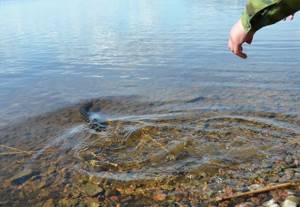
I set off from here to the ferry, hoping that there must definitely be a zander there, because in my previous place I most likely scared away absolutely all the fish for a long time. Slowly and despondently I wander upstream, gradually, here and there catching grass, I see a military ferry, but I ignore it and don’t care about the same khamsin.
Fishing in the Oryol region
The Oka and Zusha rivers have long been considered the best fishing spots in the Oryol region. You can, of course, fish in the Oryol region in paid artificial reservoirs and natural lakes. But big rivers are still latitude, space, and an excellent opportunity to try out new fishing tactics or experiment with a variety of baits.
Fishing on the Oka
Where the Oka flows in the Oryol region there are a large number of branches, floodplain lakes and oxbow lakes. Fishing on the Oka River in the Oryol region in such places is often very promising.
Average depths in the Oka throughout the region rarely exceed the three-meter mark. The Oka is rich in fish stocks and over 30 species of fish live in its waters. But most fishermen, both local and visitors, mainly catch bream, roach, asp, ide, pike, perch, chub, and less often pike perch and catfish.
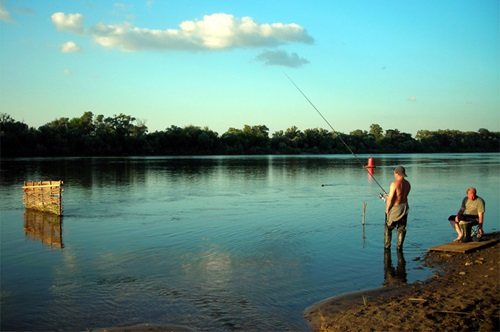
They fish in Oka both from a boat and from the shore, but still fishing from a boat gives a significant advantage. From a boat it is easier to get to any place that is inaccessible from the shore, and you can also fish quite large areas.
Summer fishing in the Oryol region on the Oka, as well as in most regions of Central Russia, enters an active phase in the second half of April and continues almost until the end of September.
IT IS IMPORTANT TO KNOW! Fishermen caught 25 kg of fish using the Fish XXL ! Read more.
The best places for catching predatory fish on the Oka are in its lower reaches. On the rifts, chub, pike perch and perch are well caught from the peaceful fish dace and podust. In pits and floodplain lakes, local experts catch good catfish.
Bream and silver carp are well caught on the Oka, and pike, silver bream and roach can be caught anywhere in the river; the concentration of these types of fish in the river is very large. On the Oka, bream, as a rule, does not walk very far from the shore, especially in those places where it is steep. This fish perfectly senses the smell emanating from bait and will constantly stick to those places that are regularly fed.
When the spawning period ends for many species of fish in May, they again rush from small tributaries to the Oka. During this period, fish are caught well with long casts, especially when casts are made 20 meters or more.
Fishing in the Oryol region on the Oka will be successful if you choose the right place. The features of such places are a gentle current, a sandy bottom and an abundance of deep holes. And if such a place is found, there is no need to think twice; there are definitely fish in such places.
Many species of fish in the waters of the Oka, like in any other river, are very fond of places where there are holes, dumps, uneven bottoms, edges, etc. Such places are very promising and significantly increase the chances of a good catch. To successfully fish, you should study the bottom topography well in the places where you prefer to fish, and you will always be successful.
A group of fishermen revealed the name of the secret bait during interrogation.
Category: regional news.
Fishing on the Zusha River
Zusha is one of the largest tributaries of the Oka in the Oryol region. Its origins are located in the Tula region. The mouth of Zushi is located in the vicinity of the village of Gorodishche, Balakhovsky district. The length of the river is 233.8 km, and the widest point is 80 m, located in the Mtsensk region. The depths of the river are small, on average about two meters or a little more. Zusha has several tributaries, Neruch, Snezhed, Chern.
Fishing in the Oryol region on Zushi is amazing, the waters of the river are very clean and transparent, and you can see the bottom almost everywhere. The current on the river is fast, and the banks are mostly steep; in some places there are rapids; there are no floodplains.
The river is very picturesque and attracts many people with its fabulous beauty and excellent fishing. Zusha has everything you need for promising fishing: deep pools, places with holes and riffles, sandbanks with a quiet current.
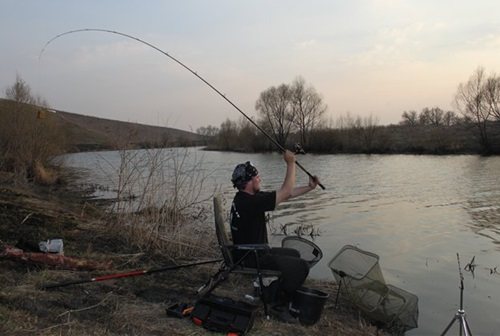
Fishing on the Zusha River in the Oryol region is mainly for perch and roach, but asp, chub, pike perch, ide and pike are also well caught here. You can drive up to the river by car without any problems; for this purpose, there are convenient entrances, and there are plenty of good places where you can go fishing and set up camp.

